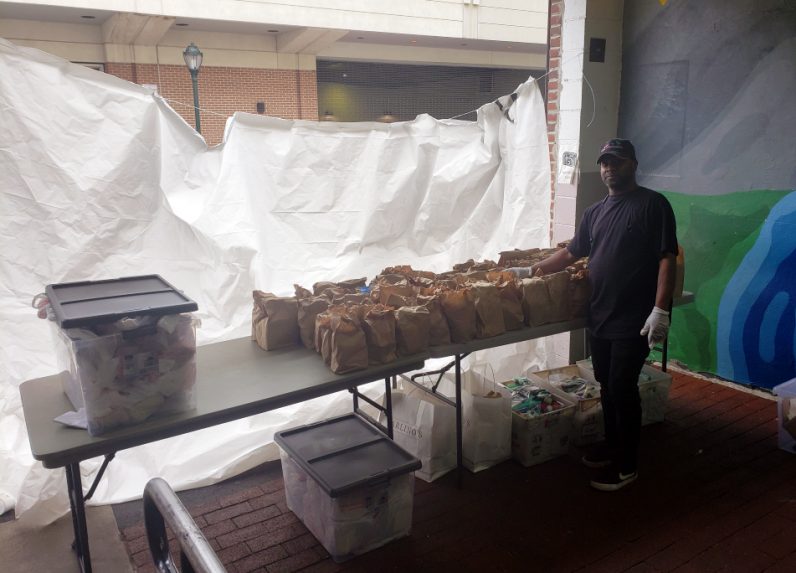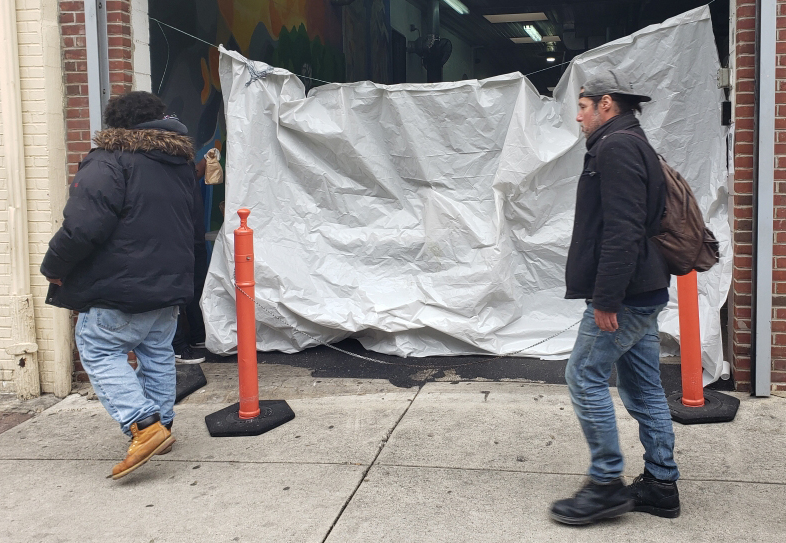
Staff at St. John’s Hospice in Philadelphia have been serving well over 300 lunches every weekday due to the closure of a nearby shelter during the coronavirus pandemic. The outreach, part of archdiocesan Catholic Social Services’s homelessness division, is looking to raise $30,000 to cover its April expenses. (Photo courtesy of Martin Farrell)
The coronavirus pandemic has tripled the demand for food assistance at one longtime archdiocesan outreach, prompting an emergency fundraising campaign to help feed some of the area’s most vulnerable individuals.
St. John’s Hospice, located at 1221 Race Street in Philadelphia, is now serving “300 plus lunches every single weekday,” said Martin Farrell, the hospice’s director of development and community relations.
Operated by archdiocesan Catholic Social Services (CSS) and a beneficiary of the Catholic Charities Appeal, St. John’s offers residential services for more than 250 men transitioning from homelessness to independent living.
[hotblock]
The Center City facility also provides case management, on-site nursing, daily showers and a mail room for more than 1,300 men.
Farrell said the steep uptick in clients is a direct result of the closure of a nearby shelter, as well as area business shutdowns aimed at containing the virus’ spread.
In addition, the pandemic has exacerbated Philadelphia’s ongoing food insecurity, which rose 22% from 2012 to 2017.
As a result, St. John’s is now looking to raise $30,000 within the next week to meet its increased operating costs for the month of April.
Donations can be made online through the hospice’s website and or sent to the hospice by mail at P.O. Box 781048, Phila., Pa., 19178-1048.

Clients of St. John’s Hospice in Philadelphia receive carryout lunches, March 30. The hospice, a ministry of archdiocesan Catholic Social Services, has launched an emergency donation campaign in response a tripled increase in demand. (Photo courtesy of Martin Farrell)
The hospice’s development team and several supporters have already pledged to match the first $15,000 collected, said Farrell.
“They’re putting their money where their mouth is,” he said. “They’re giving a positive challenge to others in this time of crisis.”
Although it largely relies on donated food items, the hospice spends an estimated $6 to $8 per meal on side dishes, desserts, beverages and serving supplies, Farrell said.
He added that hospice residents have “rallied around the cause,” preparing the carryout packages in which meals are now being served to prevent possible person-to-person infection.
“These guys know what it’s like, since they’ve been in that position themselves,” he said.
The hospice, which has been in operation since 1963, provides an even greater source of stability for clients during the pandemic, Farrell noted.
“We’ve been a staple in our neighborhood for almost 60 years,” he said. “People experiencing homelessness really depend on our consistency, because consistency itself is so lacking in their lives. Because we’re still running, it gives them a sense of hope.”
PREVIOUS: Thousands learn to ‘cling to God’ in 1st night of virtual retreat
NEXT: South Philly parishioners treat first responders to lunch



Share this story